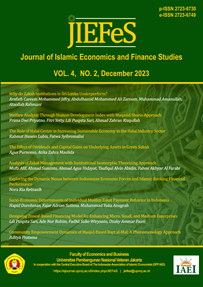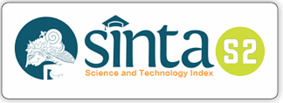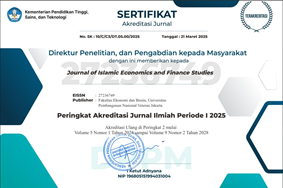Welfare Analysis Through Human Development Index with Maqasid Sharia Approach
DOI:
https://doi.org/10.47700/jiefes.v4i2.6831Keywords:
I-HDI, Maqasid Sharia, WelfareAbstract
The existing Human Development Index (HDI), published by UNDP may be the most comprehensive indicator. Even though, it is not fully compatible and sufficient to measure human development from an Islamic perspective. The purpose of this study is to analyze the Human Development Index in Indonesia with the maqasid sharia approach using several indicators that include crime, life expectancy, long school expectancy, average length of schooling, births, infant mortality, and per capita expenditure. The measurement results show variations in I-HDI from year to year, with the highest value in 2022 and the lowest in 2021. The I-HDI categorization classifies 2017, 2018, 2019, and 2022 as very high categories, while 2020 and 2021 are in the high category. The factors that make up I-HDI are divided between the Material Welfare Index (MWI) and the Non-Material Welfare Index (NWI). Although MWI showed low numbers, NWI made a significant positive contribution. NWI has a dominant role, with the highest score in 2017 and an average of 83.58 percent. This finding implies that Non-Material Welfare is a key factor in shaping I-HDI in Indonesia. These conclusions can be used as a basis for formulating more effective development policies, reinforcing aspects that are considered lacking, and providing guidance for future policy considerations.
Indeks Pembangunan Manusia (IPM) yang diterbitkan oleh UNDP dapat menjadi indikator yang paling komprehensif. Namun, alat ukur tersebut tidak sepenuhnya kompatibel dan memadai untuk mengukur pembangunan manusia jika ditinjau dalam perspektif Islam. Tujuan penelitian ini adalah menganalisis Indeks Pembangunan Manusia di Indonesia dengan pendekatan maqashid syariah yang meliputi beberapa indikator seperti kriminalitas, angka harapan hidup, lama sekolah, rata-rata lama sekolah, kelahiran, kematian bayi, dan pengeluaran per kapita. Hasil pengukuran menunjukkan adanya variasi I-HDI dari tahun ke tahun, dengan nilai tertinggi pada tahun 2022 dan terendah pada tahun 2021. Kategorisasi I-HDI mengklasifikasikan tahun 2017, 2018, 2019, dan 2022 dalam kategori sangat tinggi, sedangkan tahun 2020 dan 2021 termasuk dalam kategori tinggi. Faktor-faktor pembentuk I-HDI terbagi menjadi Indeks Kesejahteraan Material (MWI) dan Indeks Kesejahteraan Non-Material (NWI). Meski MWI menunjukkan angka yang rendah, namun NWI memberikan kontribusi positif yang signifikan. NWI mempunyai peran dominan dengan skor tertinggi pada tahun 2017 dan rata-rata mencapai 83,58 persen. Implikasi dari temuan ini menunjukkan bahwa kesejahteraan non-material menjadi faktor kunci dalam pembentukan I-HDI di Indonesia. Kesimpulan tersebut dapat dijadikan landasan untuk merumuskan kebijakan pembangunan yang lebih efektif untuk memperkuat aspek-aspek yang dianggap kurang optimal, dan memberikan pedoman pertimbangan kebijakan di masa depan.
References
Ahdiat, A. (2023). Indonesia's Birth Rate Drops 30% in Three Decades. Katadata Media Network. https://databoks.katadata.co.id/datapublish/2023/01/30/angka-kelahiran-indonesia-turun-30-dalam-tiga-dekade
Al-Ghazali. (1993). Al-Mustafa. Dãr al-Qutb al-'Ilmiyah.
Anto, M. H. (2010). Introduction an Islamic human development Indeks (I- HDI) to Measure Development in OIC Countries. IRTI Journal, 19(2).
Ariza, A. (2016). The effect of economic growth and capital expenditure on the Human Development Index (HDI) in an Islamic perspective. Al-Maslahah Journal of Sharia Science, 12(1), 1–12.
Auwalin, M. (2020). Analysis of Bootstrapping Dea Efficiency and Malmquist Index In Government Expenditure on Islamic Human Development Index In Regencies/Cities of East Java Province. Jurnal Ekonomi Syariah Teori Dan Terapan, 7(1), 132–140.
BAPPENAS. (2018). Sekilas SDGs. https://sdgs.bappenas.go.id/sekilas-sdgs/
Beik, I. S., &; Arsyianti, L. D. (2017). Sharia Development Economics (Print II). Eagle Press.
BPS. (2022). HDI Disparities Between Provinces/Municipalities. BPS. https://dompukab.bps.go.id/news/2018/04/16/61/pembangunan-manusia-indonesia-tinggi-disparitas-antarprovinsi-juga-tinggi.html
Darnawaty, F., &; Purnasari, N. (2019). Analysis of the Effect of Economic Growth, Population Growth, and Education Aspects on IPM in North Sumatra. EKOMBIS Science Journal of Economics, Finance and Business, 4(2), 17–25.
Isa, M. M., Kareem, M. A. A., Shah, M. E., & Shirazi, N. S. (2023). Islamic Human Development Index (i-HDI) and Poverty Reduction in OIC Countries. Journal of King Abdulaziz University: Islamic Economics, 36(1), 71–90. https://doi.org/10.4197/Islec.36-1.4
Jaelani, A. (2018). Performance-based budget system in the State Budget in Indonesia Islamic economic perspective. Al-Amwal : Journal of Shari'ah Economics and Banking, 10(1), 128–145.
Moleong, L. J. (2017). Qualitative Research Methods. PT Remaja Rosdakarya.
Mutaqin, A. (2017). The theory of maqâshid al syarî'ah and its relation to the istinbath method of law. Canon Journal of Legal Sciences, 19(3), 547–570.
Pusiknas Bareskrim Polri. (2022). Alert, Crime in 2022 is on the Rise. Pusiknas Bareskrim Polri. https://pusiknas.polri.go.id/detail_artikel/waspada,_kejahatan_di_2022_meningkat
Son, R. F. I., &; Lisna, V. (2020). Poverty-growth-inequality triangle (PGI Triangle): Financial development, human development, and income inequality in Asia. Journal of Economics and Development, 28(2), 77–89.
Rochmah, S. (2019). The Influence of Macroeconomic Factors on the Islamic Human Development Index (IHDI) in Indonesia in 2013-2017. Journal of Sharia Economics Theory and Applied, 6(4), 283.
Sabar, Z., Hamzah, M. Z., &; Basri, Y. Z. (2017). 184Analysis of the Impact of Sharia Maqashid on the Human Development Index on the Island of Sumatra. Al-Awqaf: Journal of Islamic Endowments and Economics, 10(2), 184–200.
United Nations, Department of Economic and Social Affairs, P. D. (2023). Total fertility rate - World Population Prospects: The 2022 Revision. https://population.un.org/dataportal/data/indicators/19/locations/360/start/1990/end/2100/line/linetimeplot
Zatadini, N., &; Syamsuri, S. (2018). The concept of maqashid sharia according to al-Shatibi and its contribution in fiscal policy. Al-Falah: Journal of Islamic Economics, 3(2), 111–124.
Zubair, H. (2006). “Sustainable Development from an Islamic Perspective: Meaning Implications and Policy Concerns. Journal of King Abdulaziz University: Islamic Economics, 19(1), 3–18.
Downloads
Published
Issue
Section
License
Copyright (c) 2023 Prima Dwi Priyatno, Fitri Yetty, Lili Puspita Sari, Ahmad Zahran Rizqulloh

This work is licensed under a Creative Commons Attribution 4.0 International License.
Authors who publish with this journal agree to the following terms:
- Authors retain copyright and grant the journal right of first publication with the work simultaneously licensed under a Creative Commons Attribution 4.0 International License that allows others to share the work with an acknowledgment of the work's authorship and initial publication in this journal.
- Authors can enter into separate, additional contractual arrangements for the non-exclusive distribution of the journal's published version of the work (e.g., post it to an institutional repository or publish it in a book), with an acknowledgment of its initial publication in this journal.
- Authors are permitted and encouraged to post their work online (e.g., in institutional repositories or on their website) before and during the submission process, as it can lead to productive exchanges, as well as earlier and greater citation of published work.

This work is licensed under a Creative Commons Attribution 4.0 International License.











